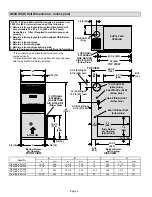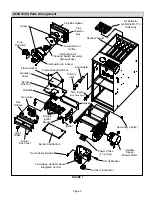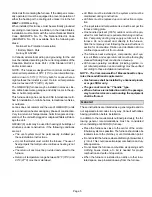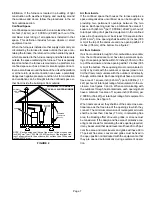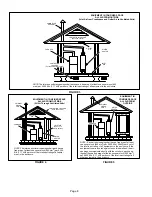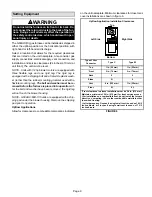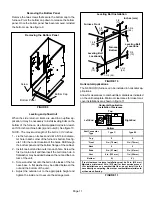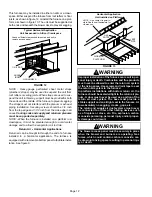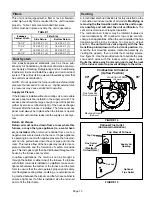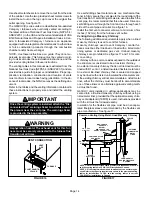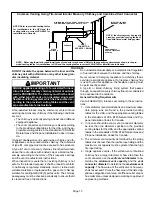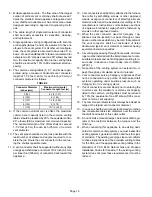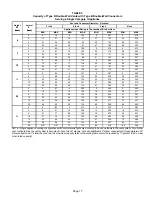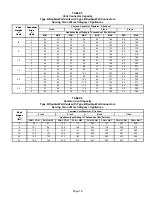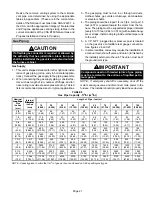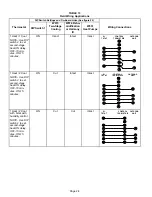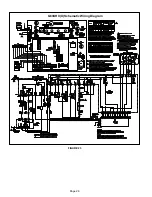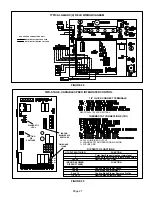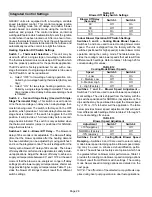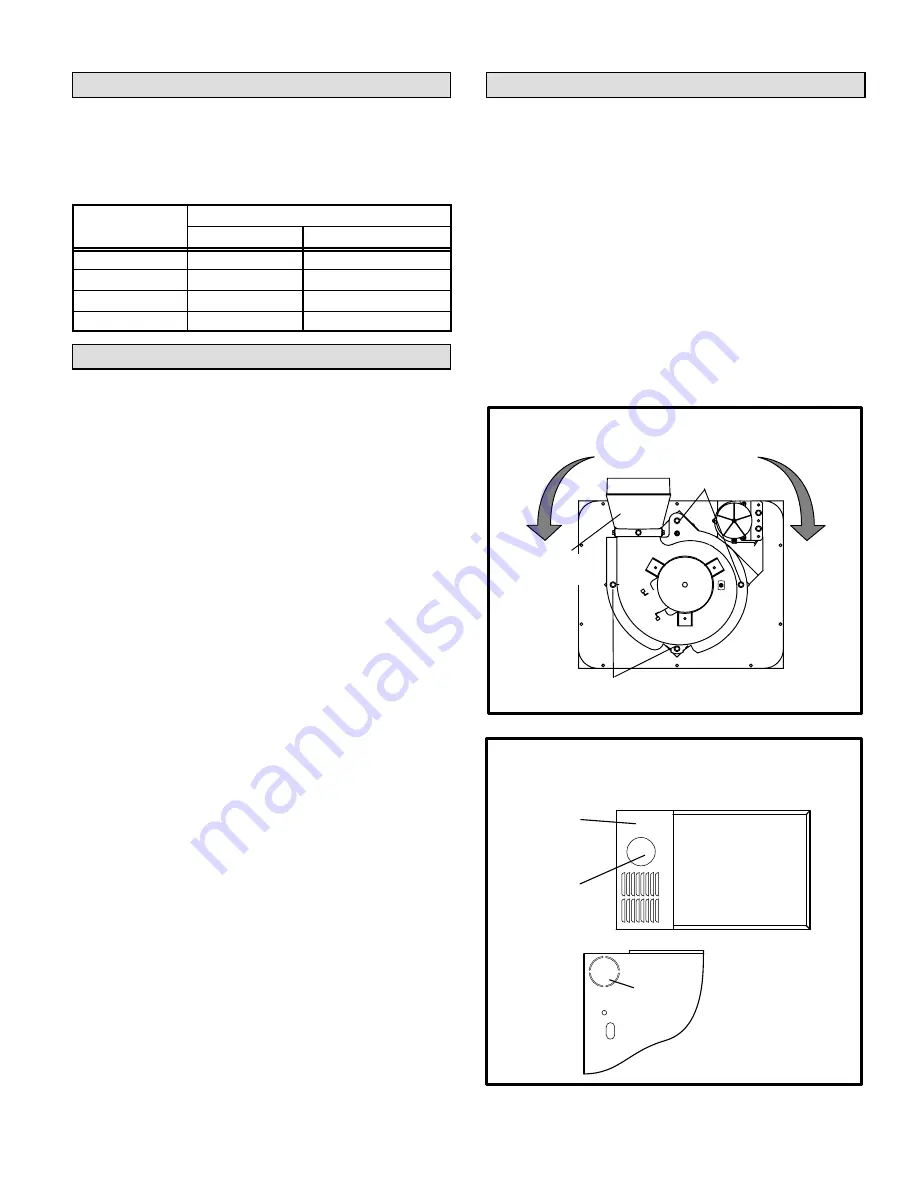
Page 13
Filters
This unit is not equipped with a filter or rack. A field−pro-
vided high−velocity filter is required for the unit to operate
properly. Table 1 lists recommended filter sizes.
A filter must be in place any time the unit is operating.
TABLE 1
Furnace
Filter Size
Furnace
Cabinet Width
Side Return
Bottom Return
14−1/2"
16 X 25 X 1 (1)
14 X 25 X 1 (1)
17−1/2"
16 X 25 X 1 (1)
16 X 25 X 1 (1)
21"
16 X 25 X 1 (1)
20 X 25 X 1 (1)
24−1/2"
16 X 25 X 1 (2)
24 X 25 X 1 (1)
Duct System
Use industry-approved standards (such as those pub-
lished by Air Conditioning Contractors of America or Ameri-
can Society of Heating, Refrigerating and Air Conditioning
Engineers) to size and install the supply and return air duct
system. This will result in a quiet and low-static system that
has uniform air distribution.
NOTE − Do not operate the furnace with an external static
pressure that exceeds 0.8 inches w.c. Higher external stat-
ic pressures may cause erratic limit operation.
Supply Air Plenum
If the furnace is installed without a cooling coil, a removable
access panel must be installed in the supply air duct. The
access panel should be large enough to permit inspection
(either by smoke or reflected light) of the heat exchanger
for leaks after the furnace is installed. The furnace access
panel must always be in place when the furnace is operat-
ing and it must not allow leaks into the supply air duct sys-
tem.
Return Air Plenum
Return air must not be drawn from a room where this
furnace, or any other gas appliance (ie., a water heat-
er), is installed.
When return air is drawn from a room, a
negative pressure is created in the room. If a gas appliance
is operating in a room with negative pressure, the flue prod-
ucts can be pulled back down the vent pipe and into the
room. This reverse flow of the flue gas may result in incom-
plete combustion and the formation of carbon monoxide
gas. This toxic gas might then be distributed throughout the
house by the furnace duct system.
In upflow applications, the return air can be brought in
through the bottom or either side of the furnace. If a furnace
with bottom return air is installed on a platform, make an air-
tight seal between the bottom of the furnace and the plat-
form to ensure that the unit operates properly and safely.
Use fiberglass sealing strips, caulking, or equivalent seal-
ing method between the plenum and the furnace cabinet to
ensure a tight seal. If a filter is installed, size the return air
duct to fit the filter frame.
Venting
A 4−inch diameter flue transition is factory-installed on the
combustion air inducer outlet of all models.
Modifying or
removing the flue transition will cause the unit to oper-
ate unsafely and will void the unit certification.
The
vent connector does not require insulation.
The combustion air inducer may be rotated clockwise or
counterclockwise by 90° to allow for top or side vent dis-
charge in all applications. When the unit is installed, the flue
transition must be in the 9 o’clock, 12 o’clock or 3 o’clock
position.
The unit will not vent properly with the flue
transition pointed down in the 6 o’clock position.
Re-
move the four mounting screws, rotate the assembly (in-
cluding the gasket), then reinstall the mounting screws.
See figure 14. Use the provided wire tie to bundle the pres-
sure switch wires with the inducer motor power leads.
Route the wires away from moving parts and the heat
of the inducer motor to prevent damage to the wires.
FIGURE 14
Combustion Air Inducer
(Upflow Position)
Mounting Screws
MOUNTING SCREWS
90°
90°
(Remove)
(Remove)
Flue Transition
(Do not remove
)
Flue Outlet
Hole
(
Reattach
Cutout Here)
Supply Air
Opening
Top View of Furnace
Top Cap
Cut out
Optional
Flue Outlet
Optional Flue Outlet
(Horizontal Installation)
FIGURE 15


